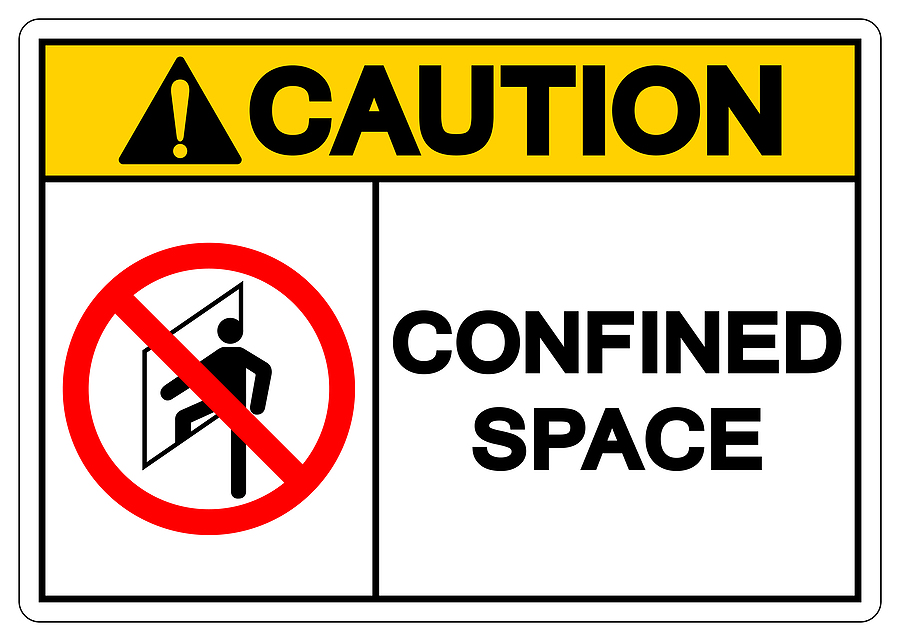Confined Space Training Requirements Spelled Out

Necessary standards for training in tight spaces are essential to ensuring worker safety in the construction industry. The definition of a restricted place that OSHA provides is as follows:
Working in confined spaces is an unavoidable but dangerous component of the job in the construction industry. Confined spaces can be any size or shape.
Still, they must fulfill the following three OSHA requirements to be considered safe: “work areas that (1) are large enough for an employee to enter; (2) have limited means of entry or exit; and (3) are not designed for continuous occupancy.” Confined spaces can be any size or shape, but they must meet all three requirements. Tanks, sewers, pipes, maintenance holes, crawl spaces, furnaces or boilers, and mixers are some of these places. Everyone in the construction sector should approach any location they are unsure of as if it were a possible restricted space. This will help ensure everyone’s safety.
Working in confined spaces exposes employees to physical and atmospheric threats and the possibility of “toxic chemicals, electrocutions, explosions, and asphyxiation.” (When dangers are detected in advance, that place is a permitted space, which means it is a known hazardous environment.) However, the threat of restricted space hazards may be decreased with the appropriate planning and training.
What does the training involve?
The OSHA Confined Space Standard was first implemented in 1993 to safeguard employees in the general industry. 3 Because construction sites present their own set of confined space dangers and have areas prone to frequent change, OSHA established a construction-specific standard in 2015.
Before employees in confined spaces are allowed to enter, the Occupational Safety and Health Administration (OSHA) requires training from industrial hygienists or other specialists in health and safety.
- The training requires participants and attendees to demonstrate comprehension, knowledge, and expertise.
- Everyone on the team participates in the training before entering a tight location.
- Whoever approves admission into the place must be aware of everything contained there, including any potential dangers.
Those in charge of authorizing access must ensure that every worker knows what is ahead of them and their unique responsibilities. Along with the worker entering the restricted area, the attendants, supervisors, and rescue team must also be trained.
Training needs to be provided at no cost to workers, it needs to be offered at a language and vocabulary level that each worker can comprehend, and it needs to be documented.
Entrant training
Employers are responsible for teaching employees entering tight spaces to recognize potential dangers.
- Outside of the expressly specified constrained zone, communicate with the staff.
- Recognize the warning indications of danger and make the attendants aware of them.
- Employ the proper personal protective equipment (PPE) and instruments and know where to get and how to utilize the equipment.
- Know self-rescue tactics.
Attendant training
Attendants stationed outside of the limited space need to receive training in the job they will do. Every worker who enters a restricted place is required to get training in the responsibilities of attendants. Participants are required to:
- Maintain an accurate tally of the number of participants in the contest.
- Determine the risks and keep an eye on the conditions.
Oversee and coordinate rescues.
Maintain constant communication during entry and when issuing orders to evacuate if workers encounter conditions that are not covered by the entry permit; workers’ behavior changes; workers are unable to control a hazard; external conditions could harm entrants, or the attendant must leave to attend to an emergency at another site that they monitor.
Only authorized employees should be allowed to enter.
Attendants are not permitted to enter restricted space work areas under any circumstances. However, they can participate in rescue operations that do not need them to enter space.
General training
Except for those who work in rescue, all other workers receive training on the dangers that come with assisting in the recovery of another team member.
People who enter restricted places to save a member of their team account for more than half of all fatalities associated with these environments.
